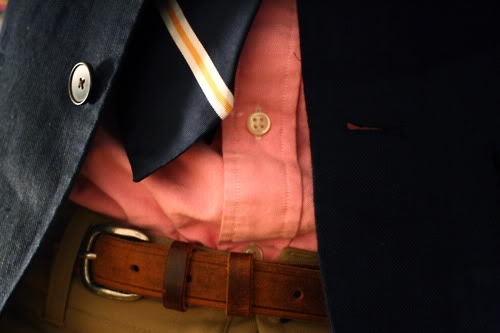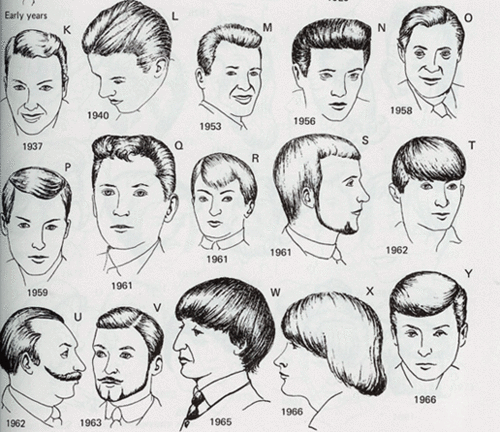I don’t know how we managed to do it, but this is a subject that we’ve hardly ever spoken about…Thanks to those who pointed it out to us…as we were always briefly mentioning it, it never occurred to us that a full article was in order.
Your ideas for articles are always welcome (if it’s got something to do with our field of expertise: as a reminder we are a blog of Asian pin-ups that sometimes talk about clothes…)

You’ll know everything about retouching
Knowing what can (or cannot) be altered on an item of clothing is an important basic: to correct a previous bad buy (if you’re discovering the fashion blog and are starting to throw out or give away clothes that you now think are too big for you etc) but also to be able to tell if a bargain is worth buying or not (imagine that you find the perfect coat in the sales but think it needs a slight retouch at the waist or a shortening of the sleeves).
In concrete terms, what can be altered?
Everything can be altered. Yes, everything. But then, there’s the question of cost (if the retouches are more expensive than the item of clothing itself…no thanks) and of knowing how to find a competent tailor (which isn’t always as obvious as it sounds).
Retouching a coat, jacket or blazer
The length of sleeves can be altered in several ways: the sleeve can be shortened (with a simple turn-up) or lengthened if the manufacturer has left enough material on the inside of the sleeve. For example, on a blazer, we can generally add between 3 and 4cm.

For example, 3.5cm can be added on this jacket
When the sleeve is shortened, you have to be careful not to mess up the proportions of the item. For example, a button too close to the end of the sleeve won’t look great.

If we take away more than 3 or 4cm, the button will be too close to the edge.
People prefer to shorten the sleeve, then, the shoulder: by deconstructing the shoulder to reconstruct it afterwards. But, as you can imagine, this is a more difficult operation (and pricey – about 60 dollars), so should be avoided where possible.
The length of an item can also be slightly retouched (as long as the proportions are left intact, again). For example, I had 6cm (and one button) taken off a khaki trench that came down too close to my knees and shrank my silhouette. On another coat with symmetrical buttons, I even got rid of the two lower buttons to keep the right proportions after retouching.

Trenches and coats – never to the knees
Finally, we get to the fitting, a key element of a jacket. Most items with sleeves have 5 darts. A dart is a seam that can be undone to bring the two panels of cloth closer together, which creates a tighter fit.
This can also be really useful to correct the back if there’s too much material for your morphology.

Two darts at the front (the two seams that go from the corner of the pockets)

Three darts at the back: 2 at the sides that go up to the armpits and one at the back that goes up to the neck
Retouching trousers (not jeans)
With trousers, it is possible to make the waist bigger or smaller. Here, too, the manufacturer often leaves a bit of a margin: a 46 waist can be retouched to create either a 44 or 48.

The back of the trousers
And if we look on the inside…

We find material that can be used to slacken the waist (with the risk of losing the white bands)

On the seams at the sides, there’s more fabric that can be used to create a bigger waist
Important note: I’m drawing your attention to retouches made on the waist of jeans. Jeans are made from a fairly stiff fabric and retouches at the waist often create horrible vertical creases at either side of the zip. Be warned, particularly when it comes to selvedge!
The legs of the trousers can also be made smaller (on all trousers, including jeans). It is a simple operation and doesn’t cost much (about 20 dollars)
Cut maniacs will object than a length of 34 in semi-slim jeans could not be shortened to fit a shorter person (1m70 for example or 6’9”). But this is actually possible…the jeans will look slightly less sharp, but that’s rarely an issue. Apart from if the cut is REALLY carrot-shaped: wide at the thighs and very tight at the ankles…which isn’t the case very often!

Carrot cut – you can see where the name comes from
Retouching a T-shirt or shirt
Also possible: we can tighten the darts to adjust the cut. And it’s also obviously possible to shorten the sleeves or the length of a T-shirt itself. The real question is, ‘is it worth it?’ given the low cost of a T-shirt compared to the cost of retouching…it’s up to you!
In the case of shortening the sleeves on a shirt, this can be done at the shoulder. A good tailor is necessary because too much fabric can appear at the armpit (you’re not batman). Or the sleeve can be turned up directly at the wrist…but this is less frequent.
Repairing a damaged item
When an item is too worn (the opening of trousers, the elbows on a blazer), it is possible to repair it but you’re better off going for a quality tailor who will solidly sew a patch (interior or exterior) where a hole is beginning the emerge: it’s the assurance that the thread of the patch won’t then pull on the fabric of the item and tear it. A good tailor will also have a priori more choice when it comes to the color and will know how to find a fabric close to the original.
In the case of jeans, a good tailor will directly repair the chain and weft if it’s possible to reinforce it from the back (but special machines are needed). It’s the case of jeans repair that also functions through correspondence.
A bit of advice: don’t hang around for this kind of reparation. Go for it from the first signs of wear (you can see the light through the trousers when held up to the light).

Specialist jeans retouchers can work miracles
Which retouches are impossible (or too risky)?
Some retouches are quite simply impossible. For example, it’s very hard to retouch a knitted item because it unknits itself afterwards. A very specific knowledge is needed and you won’t find that close to home. But if the knit is simply damaged and starting to unpick itself, the right retoucher will be able to close the knit to stop the damage.
The shoulders of a blazer are also a no-go area: nothing can be done, you should have bought the right size at the shoulders from the word go…resell the items that are too big for you or give them away.
How to choose a tailor for your alterations
It’s very important to choose the right tailor for your alterations. It’s stupid to expect a super job to be done on the fitting in a little store in your area that also functions as a launderette. Major retouches require a real master tailor who cannot be found all over the place (and it’s be a shame to wreck an item you’ve invested in)
On the other hand, some alterations are simply impossible to mess up. It’s therefore not worth spending too much time (looking for the right person and getting there and back) and money on these.

Be sure about the competences of your tailor
For little alterations:
Which retouches? Simple turn-ups, the length of the sleeves (from the bottom), the start of a hole (trousers or at the elbows) slight tears or snags
As I said, it’s not worth wasting time going to a great tailor: the little local store will do the job. Go for the first you find (but don’t be stupid about it…don’t look for a really poor and cheap place!) These are all operations that should cost a maximum of about 15 dollars (but more if you go to someone who is better qualified)
Bigger retouches
Which retouches? Fitting or the length or a piece with sleeves, the waist of trousers, the shortening of sleeves at the shoulder
Here you’ll need to identify a good tailor. The golden rule: talk to him to check out his abilities.
- Test his knowledge by chatting with him
- Ask him how he’s going to do the job
To identify the good tailors in your town, go in to high-end stores and ask the staff for an address (usually this is the one they use for their needs in-store)
And belts?
If you just need to shorten it, any old shoemaker can do it for free or for less than five dollars. They just need to remove the rivet at the buckle, cut the belt to the right length and then replace the buckle: it takes all of five minutes. And there’s no pain.

We can clearly see the rivet on this photo.
There we go, there was a lot to say on the matter! You know pretty much everything now. And, as usual, if there are still some questions I haven’t answered, ask them in the comment section and I’ll enrich the article bit by bit.



Did you ever got anything altered? How was your experience?
Hi Spitzy,
Thanks a lot for your comment and feedback.
Are you like me, tall and thin? It’s not easy to find clothes that fit properly but getting a few alterations can really help.